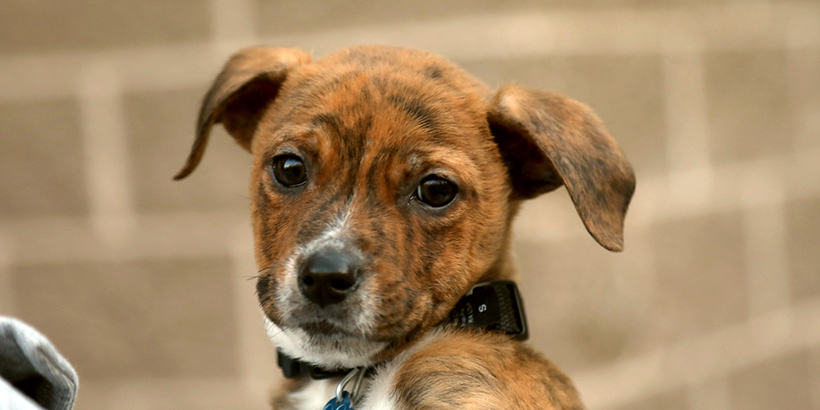
Housetraining is important to keep your house clean and sanitary. Dogs of any age can be housetrained when given appropriate, consistent training.
Implementing a schedule:
- Crate train your dog when they will be alone for long periods of time to help deter accidents in your home. Please see the “Crate Training Your Dog” handout.
- Once you know how long your dog can go between bathroom breaks, you’ll have a better idea of how often they need to be brought outside.
- As a general rule, smaller dogs should have the opportunity to go out every 4 to 5 hours, while larger dogs can often hold off for 7 or even 8, and some longer. In all cases, the more opportunities they have the better—you know how YOU feel when you are on a long road trip and need a bathroom break.
- Take your dog outside within 15 minutes after eating and/or drinking water.
- Take your dog outside as soon as they wake up in the morning.
- Look for signs your dog has to go outside, such as: pacing, whining, sitting by the door, sniffing around, etc.
Potty breaks versus play time and walks:
- A potty break is when you bring your dog outside for a short amount of time only to eliminate. During this time, they do not get to play or go for a full walk.
- If a dog who’s just learning to be housetrained is given free range of the yard all of the time, or goes on long walks all of the time, they may get so distracted that they do not eliminate until their play time is over, which is usually inside.
- Potty breaks should always be on leash and in one small area; this way you can reward your dog immediately when they eliminate outside.
- After your dog goes to the bathroom, you can begin play time or have a longer walk as a reward.
- If your dog does not potty after about 5-10 minutes, bring them back inside and watch them closely in order to catch them before they have an accident inside.
- Repeat potty breaks as needed until your dog eliminates outside.
Accidents happen:
- In case of an indoor accident, do not yell at your dog or put their face in the mess; simply clean up the mess and watch your dog closely for signs they need to go outside.
- If you catch the dog in the act, clapping your hands or saying “ah” in a loud voice is usually enough to stop the dog from eliminating. You can then calmly bring your dog outside for a potty break. Be sure to reward the dog when they finish eliminating in the appropriate place.
Cleaning up:
- If the accident is urine, be sure to soak up all of the liquid before putting cleaner on the surface. This is especially important on a carpet.
- Avoid using cleaners that contain ammonia. This smell may entice the dog to mark that same spot again. Instead, find a cleaner made specifically for cleaning up pet waste.
